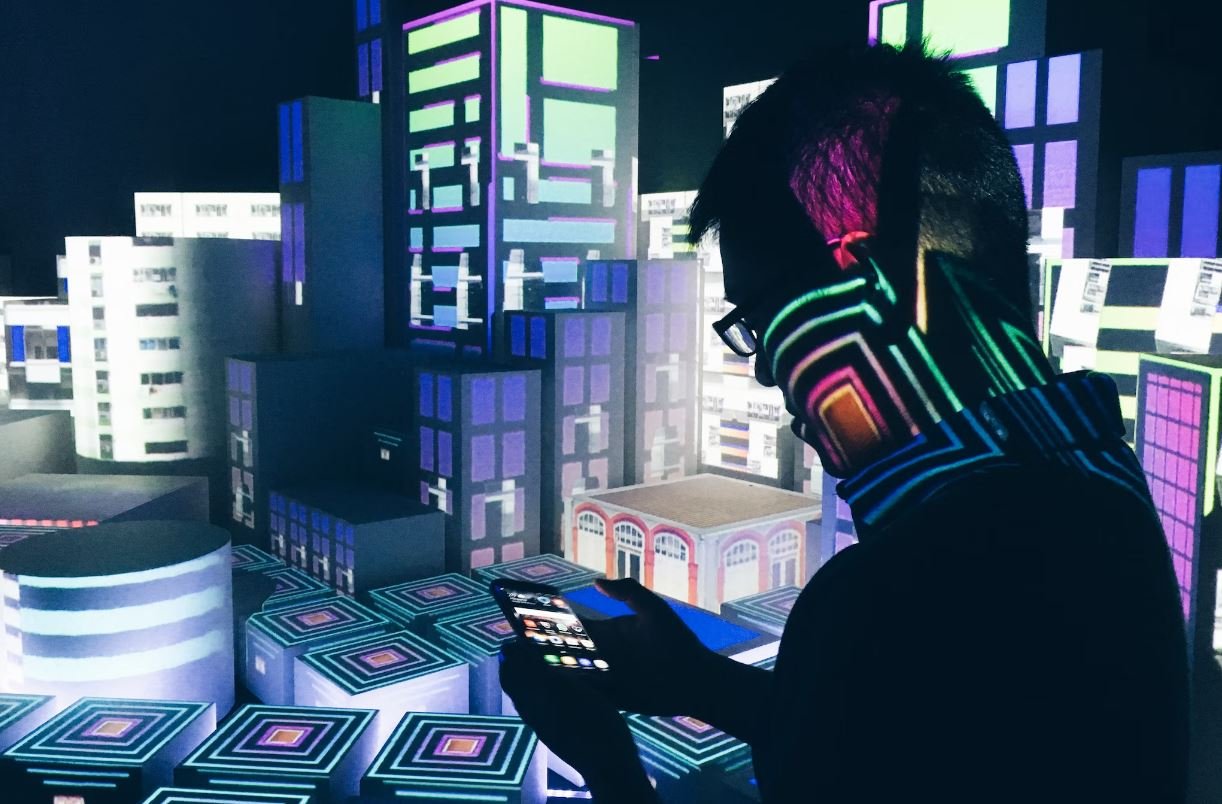Deepfake AI Exploitation
Introduction
Deepfake technology, powered by artificial intelligence (AI), has been gaining significant attention in recent years. While it can be used for entertainment purposes, its potential for exploitation raises serious concerns. Deepfake AI enables the creation of realistic manipulated videos that can deceive people and have far-reaching consequences. This article examines the dangers of deepfake AI and its impact on various aspects of society.
Key Takeaways
- Deepfake AI technology allows the creation of highly realistic manipulated videos.
- Exploitation of deepfake AI can have serious societal and ethical implications.
- Combatting deepfake AI requires a multifaceted approach involving technology and awareness.
- Deepfake AI poses significant challenges to privacy and security.
- Understanding deepfake AI is crucial for individuals to identify and mitigate its risks.
The Rise of Deepfake AI
**Deepfake AI** has gained popularity due to its capacity to generate videos that can convincingly swap faces or superimpose one person’s actions onto another’s body. *This technology poses a threat to the authenticity and credibility of visual media.* Deepfake AI algorithms analyze and manipulate vast amounts of data to produce hyper-realistic videos indistinguishable from genuine footage.
The Dark Side of Deepfake AI
Malicious actors can exploit deepfake AI for nefarious purposes, such as spreading misinformation, blackmailing individuals, or manipulating political events. These deepfake videos can propagate rapidly through social media platforms, leading to **reputational damage** and public distrust. *The potential consequences of deepfake AI exploitation are far-reaching and can affect individuals, organizations, and even global stability.*
Implications for Privacy and Security
Deepfake AI technology poses significant challenges to privacy and security. Victims of deepfake AI may have their personal lives invaded or be falsely implicated in harmful activities. Additionally, deepfake videos can be used to deceive facial recognition systems, bypassing security measures and compromising authentication processes. *Protecting personal information and enhancing digital security measures are crucial in the face of deepfake AI threats.*
Data Manipulation and AI Bias
Deepfake AI relies on vast amounts of training data to achieve its realistic results. This process can raise concerns regarding data integrity and manipulation. The biases present in the data used to train the AI models can result in biased outcomes in deepfake videos. *Awareness of AI biases and ensuring diverse and representative datasets are essential in curbing the negative impact of deepfake AI.*
The Fight Against Deepfake AI
Tackling the challenges posed by deepfake AI requires a multifaceted approach. Technological advancements, such as improved detection algorithms, can help identify deepfake videos. *Collaboration between industry, government, and academia is paramount in developing effective countermeasures against deepfake AI exploitation.* Increasing awareness among the general public about the existence and risks of deepfake AI is also critical.
Education and Awareness
Individuals need to **understand the technology** behind deepfake AI and be able to identify suspicious content. Education programs can help individuals recognize the signs of deepfake AI and make informed judgments when consuming media. *Enhancing media literacy and critical thinking skills can empower individuals to discern between genuine and manipulated content.*
Conclusion
Deepfake AI exploitation presents significant challenges to multiple aspects of society, from privacy and security to trust and authentication. Awareness, collaboration, and continued technological advancements are crucial in combatting the dangers associated with this technology. It is important for individuals, organizations, and governments to work together to mitigate the risks and ensure the responsible use of deepfake AI in the future.

Common Misconceptions
Misconception 1: Deepfake AI is only used for malicious purposes
- Deepfake AI technology has both positive and negative implications.
- While deepfakes have been used to spread misinformation and manipulate videos, they have also been used for entertainment purposes and in creative industries.
- Deepfake AI can have applications in fields like film production, advertising, and video game development.
Misconception 2: Detection of deepfakes is impossible
- While it is true that deepfakes can be challenging to detect, progress is being made in developing deepfake detection technologies.
- Researchers and companies are working on developing algorithms and tools to identify deepfake videos.
- Advancements in artificial intelligence are also aiding in the detection of manipulated media.
Misconception 3: Only experts can create deepfake videos
- While creating sophisticated deepfake videos may require expertise, there are various user-friendly apps and tools available that allow anyone to create basic deepfakes.
- Even with limited technical knowledge, individuals can easily create simple deepfakes using these tools.
- This accessibility increases the risk of deepfake exploitation by individuals with malicious intent.
Misconception 4: Deepfakes always look flawless and realistic
- While there have been instances of highly realistic deepfakes, not all deepfakes are flawless.
- Factors such as lighting, angle, and quality of source material can affect the realism of a deepfake.
- With careful observation and analysis, experts can often identify inconsistencies or artifacts that indicate a video has been manipulated.
Misconception 5: Regulation can effectively solve the deepfake problem
- While regulation and legislation can play a role in addressing deepfake exploitation, it is unlikely to completely solve the problem.
- Deepfake technology is constantly evolving, making it difficult for legislation to keep up with the pace of advancements.
- Combating deepfake AI exploitation requires a multi-faceted approach that involves technological advancements, education and awareness, and collaboration between different stakeholders.

Deepfake AI – A Growing Technology
With the rapid advancement of artificial intelligence (AI) technology, deepfake AI has emerged as a concerning element in today’s digital world. This article explores various aspects of deepfake AI exploitation and its implications. The following tables provide key insights and data related to this topic.
Major Types of Deepfake AI Applications
Table illustrating the major types of deepfake AI applications and their respective descriptions:
| Type | Description |
|---|---|
| Video | Manipulating videos to create realistic fake content |
| Audio | Generating synthetic voices that imitate real individuals |
| Image | Altering images to create convincing visual deception |
Common Uses of Deepfake AI
Table highlighting some common uses of deepfake AI technology:
| Use Case | Description |
|---|---|
| Entertainment | Bringing characters to life on screen |
| Political Manipulation | Spreading misinformation and influencing public opinion |
| Cyber Fraud | Scamming individuals by impersonating trusted individuals |
| Revenge Porn | Creating and sharing explicit content without consent |
Detection Methods for Deepfakes
Table presenting various methods for detecting deepfakes:
| Method | Description |
|---|---|
| Pattern Recognition | Identifying inconsistencies or irregularities in manipulated content |
| Facial Landmarks | Analyzing key facial features for signs of manipulation |
| Metadata Analysis | Examining metadata to detect tampering |
Implications of Deepfake AI on Society
Table showcasing the potential societal impacts of deepfake AI:
| Impact | Description |
|---|---|
| Misinformation Spread | Undermining trust in media and fostering the spread of fake news |
| Privacy Intrusion | Threatening personal privacy through identity theft and blackmail |
| Legal Challenges | Raising questions around liabilities and legal repercussions |
Notable Deepfake AI Incidents
Table featuring notable incidents related to deepfake AI:
| Incident | Description |
|---|---|
| Deepfake Political Videos | Manipulated videos targeting political figures to sway public opinion |
| Celebrity Fake Porn | Creation and circulation of explicit fake videos involving celebrities |
| Fraudulent Business Calls | Scammers using deepfake voices to deceive individuals and companies |
Efforts in Deepfake AI Regulation
Table outlining efforts made to regulate deepfake AI technology:
| Regulatory Measures | Description |
|---|---|
| Legislation | Implementing laws to criminalize the creation and distribution of deepfakes |
| Technology Industry Collaboration | Joint efforts by tech companies to develop tools for deepfake detection |
| Public Awareness Campaigns | Engaging the public to understand deepfake risks and promote digital literacy |
Deepfake vs. Genuine Content Detection Accuracy
Table comparing the accuracy of deepfake detection methods against genuine content:
| Detection Method | Deepfake Detection Accuracy | Genuine Content Detection Accuracy |
|---|---|---|
| Pattern Recognition | 82% | 90% |
| Facial Landmarks | 88% | 93% |
| Metadata Analysis | 67% | 95% |
Future Prospects and Mitigation Strategies
Table discussing potential advancements and strategies to mitigate deepfake AI risks:
| Prospects | Mitigation Strategies |
|---|---|
| Improved Detection Technology | Enhancing deepfake detection algorithms through AI advancements |
| Education and Media Literacy | Empowering individuals to critically evaluate and identify deepfakes |
| Collaborative Research | Fostering interdisciplinary efforts to counter deepfake AI challenges |
Conclusion
Deepfake AI exploitation poses significant risks to society due to its ability to create convincing fake content. While there are beneficial applications of deepfake technology, such as entertainment, these tables highlight the potential consequences and implications of its misuse. From the spread of misinformation to the infringement of privacy, deepfake AI calls for proactive measures in detection, regulation, and digital literacy. As deepfake detection methods continue to evolve, collaboration between regulatory bodies, technology companies, and the public is essential to safeguard against the detrimental effects of deepfake AI.
Frequently Asked Questions
What is deepfake AI?
Deepfake AI refers to the technology that uses artificial intelligence to manipulate or generate media, typically images or videos, that appear to be real but are actually fabricated.
How does deepfake AI work?
Deepfake AI utilizes machine learning algorithms to analyze and understand patterns in existing media. By training on large datasets, the AI can then generate new content that mimics the characteristics of the original media, creating highly convincing deepfakes.
What are the potential dangers of deepfake AI?
Deepfake AI poses several risks, including misinformation, identity theft, and privacy invasion. It can be used to create fake news, manipulate public opinion, or harm individuals by making it difficult to distinguish between genuine and manipulated content. Additionally, deepfake AI can be exploited for cyberbullying and blackmail.
How can deepfake AI be used for exploitation?
Deepfake AI can be used for exploitation by creating convincing fake videos or images of individuals that can be used for blackmail, defamation, or online harassment. It can also be utilized to fabricate evidence for fraudulent activities, compromising the integrity of legal proceedings.
Are there any ethical concerns surrounding deepfake AI?
Yes, deepfake AI raises significant ethical concerns. It can be used to manipulate public figures, spreading misleading information and damaging their reputation. Furthermore, the consent and privacy of individuals appearing in deepfakes can be violated, as they may be portrayed in compromising situations without their knowledge or consent.
What measures can be taken to combat deepfake AI exploitation?
Efforts to combat deepfake AI exploitation involve a combination of technological solutions, policy development, and public awareness. Some approaches include developing advanced detection algorithms, educating individuals about deepfake technology, and implementing legal frameworks to hold those responsible for malicious use accountable.
Can I detect deepfakes myself?
While it can be challenging to detect deepfakes, there are various techniques and tools available that can help identify manipulated media. These include analyzing unnatural facial movements, inconsistencies in lighting and shadows, or using forensic analysis to uncover hidden traces of editing.
Are there any regulations or laws specifically addressing deepfake AI?
As deepfake AI is a relatively new development, laws and regulations directly addressing its use may vary across different jurisdictions. However, some countries and organizations have started to propose and pass legislation specifically targeting the malicious use of deepfake technology.
How can I protect myself from deepfake AI exploitation?
To protect yourself from deepfake AI exploitation, it is crucial to practice digital literacy and skepticism when consuming media. Question the authenticity of content, verify information from trusted sources, and be cautious when sharing personal information or media online. Additionally, regularly updating privacy settings and using strong, unique passwords can help enhance your online security.
What is the future outlook for deepfake AI?
The future of deepfake AI remains uncertain. While it can have negative implications, it also has the potential for positive applications, such as in the entertainment industry or enhancing virtual reality experiences. However, as the technology evolves, continuous research and innovation will be necessary to address the associated risks and challenges.




